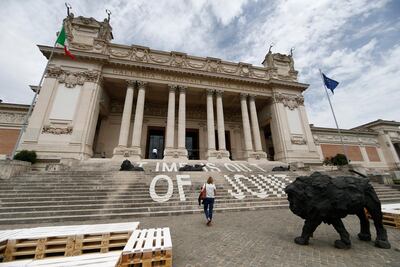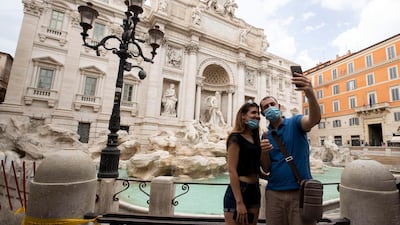Museum directors across Europe are making tentative plans to operate under social distancing as nations emerge from lockdown.
After months of government-imposed lockdowns to deal with the Covid-19 outbreak, directors of museums and exhibitions face a growing list of problems and are working on radically overhauling how they do business.
Tourists have been grounded, museums are operating with a large deficit and curators and staff face the task of convincing an uneasy public that they can be safe and still enjoy exhibitions under social distancing measures.
Speaking at an online seminar organised by the Italian embassy in London, Gabriele Finaldi, director of Britain’s National Gallery, said until tourists returned, galleries were going to have to appeal more to local visitors.
“Our museums are places that act as a magnet for tourism to those particular cities, whether it is London, Naples, Milan or Paris,” Mr Finaldi said.
“We will be working very much more with our local audiences. That is probably very much a good thing."
Xavier Bray, director of The Wallace Collection in the UK, said rekindling confidence and rethinking areas such as cafes in museums and exhibitions was also a challenge.
“The main thing is going to be earn the confidence of our public," Mr Bray said.
"There is tourism on one side, but then museums are also great meeting places, where people can find themselves not only with works of art but also with their friends.
“There will be lots of experimentation but I think it is very much going to be baby steps.”
Matteo Lafranconi, director of Le Scuderie del Quirinale in Rome, said he would work carefully with colleagues to see how the public responded to museums reopening.
“We need to see what the response of the audience will be,” Mr Lafranconi said.
"We need the support of their attention and we need to see if it is working. It needs to be proved in the next few days.”
On Monday, the Acropolis in Greece welcomed visitors and in Italy archaeological sites and public parks opened for the first time.
In Germany, museums were allowed to open earlier in May but directors reopened their attractions cautiously, making sure their employees and the public were ready for the unprecedented changes to their spaces.

Countries around the world at different stages in the pandemic are wrestling with decisions on when to ease restrictions, weighing the threat to life against that to economic survival.
More than 4.71 million people are reported to have been infected by the coronavirus and 312,826 have died, recent figures show.
Italy, with the third highest death toll in the world, is reopening, as other European nations such as Britain, which finds itself behind only the US in terms of deaths, has kept most public spaces closed.
The onset of the Covid-19 pandemic has threatened the financial stability of many of Europe’s most prestigious institutions, including those that are partly funded by the government.
In March, Germany’s federal government unveiled a €50 billion (Dh200.45bn/US$54.58bn) aid package to support the country’s creative and cultural sectors.
Mr Bray called for a similar kind of government response in Britain to show the public that life was returning to normal.
“It is very much the government that should come up with a recovery plan, very much like the German museum system and needs to put us back on our feet,” he said.
“The government could think really hard about using the museum as a way of demonstrating that our society is coming back to some kind of normality, that museums are open."
Mr Finaldi said: “I think there is some quite serious thought going on now as to whether the model we have used whether that's really sustainable into the future.
“We will be looking very closely how other models work abroad and how they change abroad and whether there is anything we can learn in this country."
































